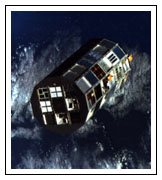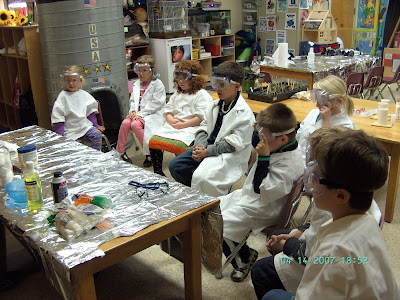 October was a great time to explore space, rockets, rocks, caterpillars, and violets! One of the Science teachers gave me some violet cuttings last year and I have been able to grow them to the point where I could reproduce them this year. These violets came from a previous space mission. They are HUGE and once they start blooming they never stop. Apparently, the conditions in space really affect them. EverFloris is a series of Optimara Violets comprised entirely of varieties developed from the Optimara "Space Violet" program.
October was a great time to explore space, rockets, rocks, caterpillars, and violets! One of the Science teachers gave me some violet cuttings last year and I have been able to grow them to the point where I could reproduce them this year. These violets came from a previous space mission. They are HUGE and once they start blooming they never stop. Apparently, the conditions in space really affect them. EverFloris is a series of Optimara Violets comprised entirely of varieties developed from the Optimara "Space Violet" program. Compared to most standard African Violets, EverFloris Violets are bigger and easier to grow, with larger, fuller blooms that flower continuously. For a listing and a variety detail of EverFloris violets, click here.
Compared to most standard African Violets, EverFloris Violets are bigger and easier to grow, with larger, fuller blooms that flower continuously. For a listing and a variety detail of EverFloris violets, click here. As a direct outcome of the Optimara Space Violet program, the development of EverFloris Violets began in 1984, when Optimara launched 25,000 Optimara seeds into space aboard one of NASA's space shuttles. The seeds remained in space, orbiting the Earth, for nearly six years. (The Long Duration Exposure Facility, on which the seeds orbited, is shown at right.) The program was conceived to test the effect of long-term exposure to cosmic radiation and lack of gravity. When the seeds were retrieved in 1990, many mutations soon became apparent. One such mutation resulted in a new characteristic which Optimara has dubbed 'multiflorescence.' This characteristic gives Optimara Violets an extraordinary abundance of flowers which never stop blooming. Compared with PMA standards, which define a finished African Violet as having five to seven open blooms, a multiflorescent Optimara variety will have at least 20 open blooms. Students will take their violets home when they are rooted.


We made a space snack by using Tootsie Pops as the inner and outer core, rice crispy treats for the mantle and graham cracker to represent the crust of the Earth. Yum, yum...
After cleaning rocks and making planetary snacks we got down to business and performed some experiments using a bell jar. By pumping the air out of the jar, we can simulate the lack of oxygen and conditions in space. 
Boo Bubbles helped illustrate the cold gassey conditions surrounding some of the planets such as Saturn. Dry ice in warm water forms a cold gas. We then dip the gas flowing out of the tube into a special bubble mixture. Out pops a huge cold bubble that the children tried to hold with their gloves.
We tried to make these paper space rockets. I will NEVER do that again. These seemingly simple rockets are not so simple to put together. For parents trying to do this at home please use tape to put the nose cone and the body of the rocket together. The fins fit together like this. 
We went outside to experiment with rockets. The children tried to predict if the rockets would fly higher with more water or with less. If you want to try this at home click here.
 Of course, I couldn't resist adding a caterpillar to the Space Lab since this gorgeous Gulf Fritillary caterpillar in the Butterfly Garden really wanted the students to see him!
Of course, I couldn't resist adding a caterpillar to the Space Lab since this gorgeous Gulf Fritillary caterpillar in the Butterfly Garden really wanted the students to see him!
This month we tackle Simple Machines and Magnets. See you then!
















3 comments:
Hi grandma you did the awesomest job on that lab! Your lab looks great...Nathan is a great helper. I was surprised to see Nathan helping you! Thanks for blogging on this. I love to read it when I have the chance.
We have a lab at my school, too. we recently did a poisonous liquid experiment. we tested reactions to vinegar, possom pee (eww!--that was Mom!), and hand sanitizer. (He could use some of that right now..the way he's coughing all over me!--Mom again)
Hint: NEVER PUT VINEGAR WITH SALT! BOOOOM!
I love you and can't wait to see you next Month. Love, Caleb (and Mom)
awesome blog, do you have twitter or facebook? i will bookmark this page thanks. lina holzbauer
I really like your blog and i really appreciate the excellent quality content you are posting here for free for your online readers. thanks peace dale tuck
Post a Comment